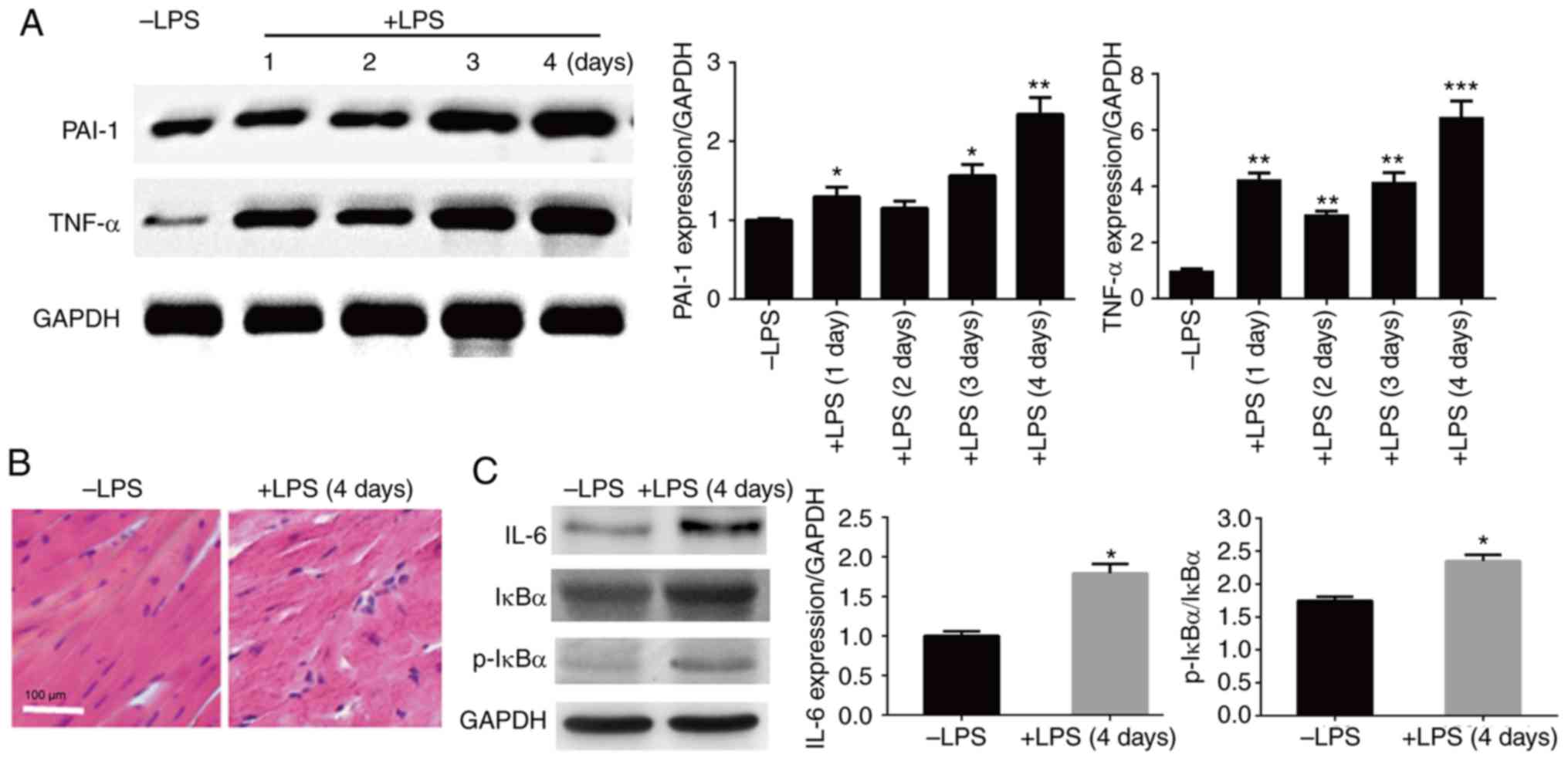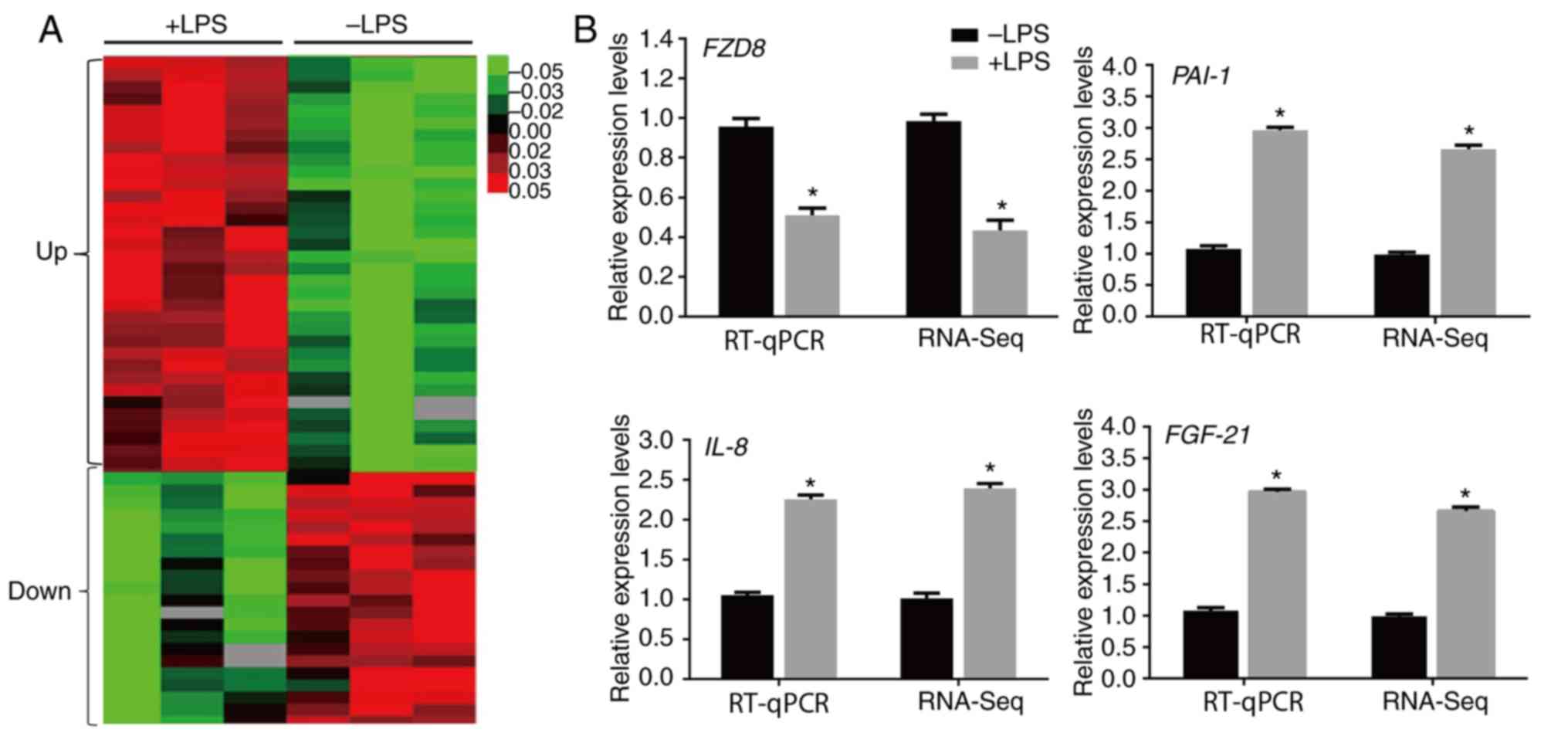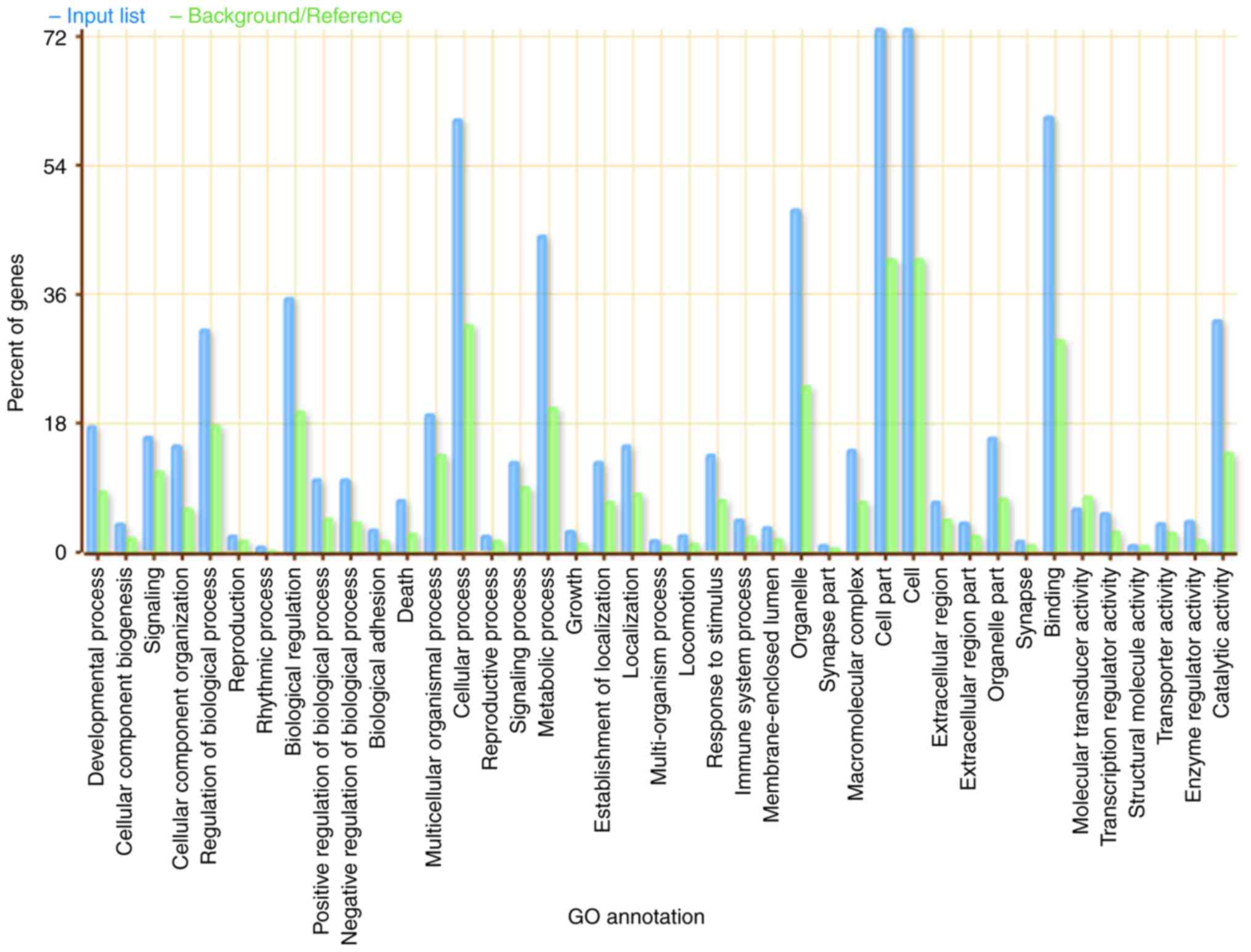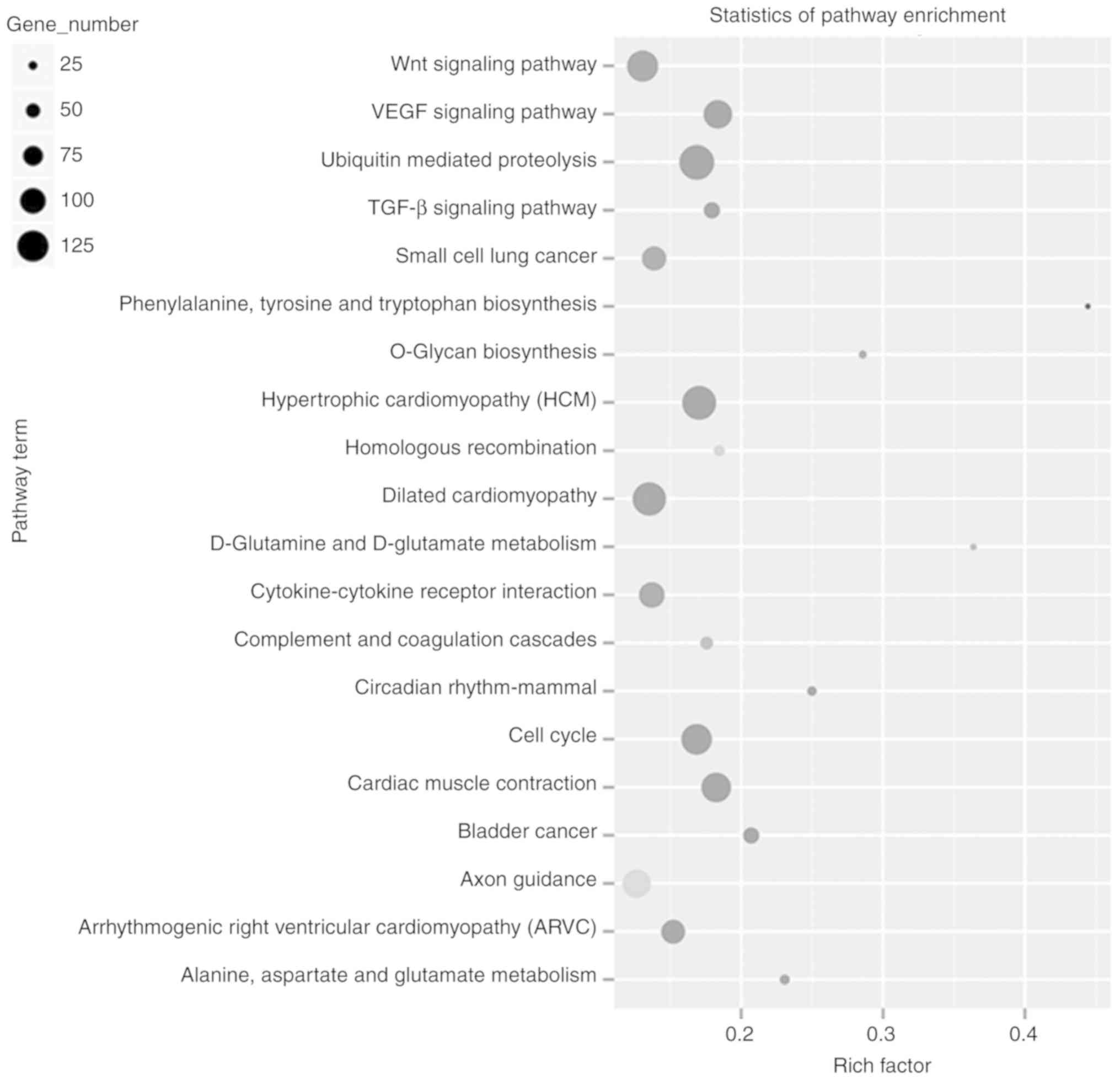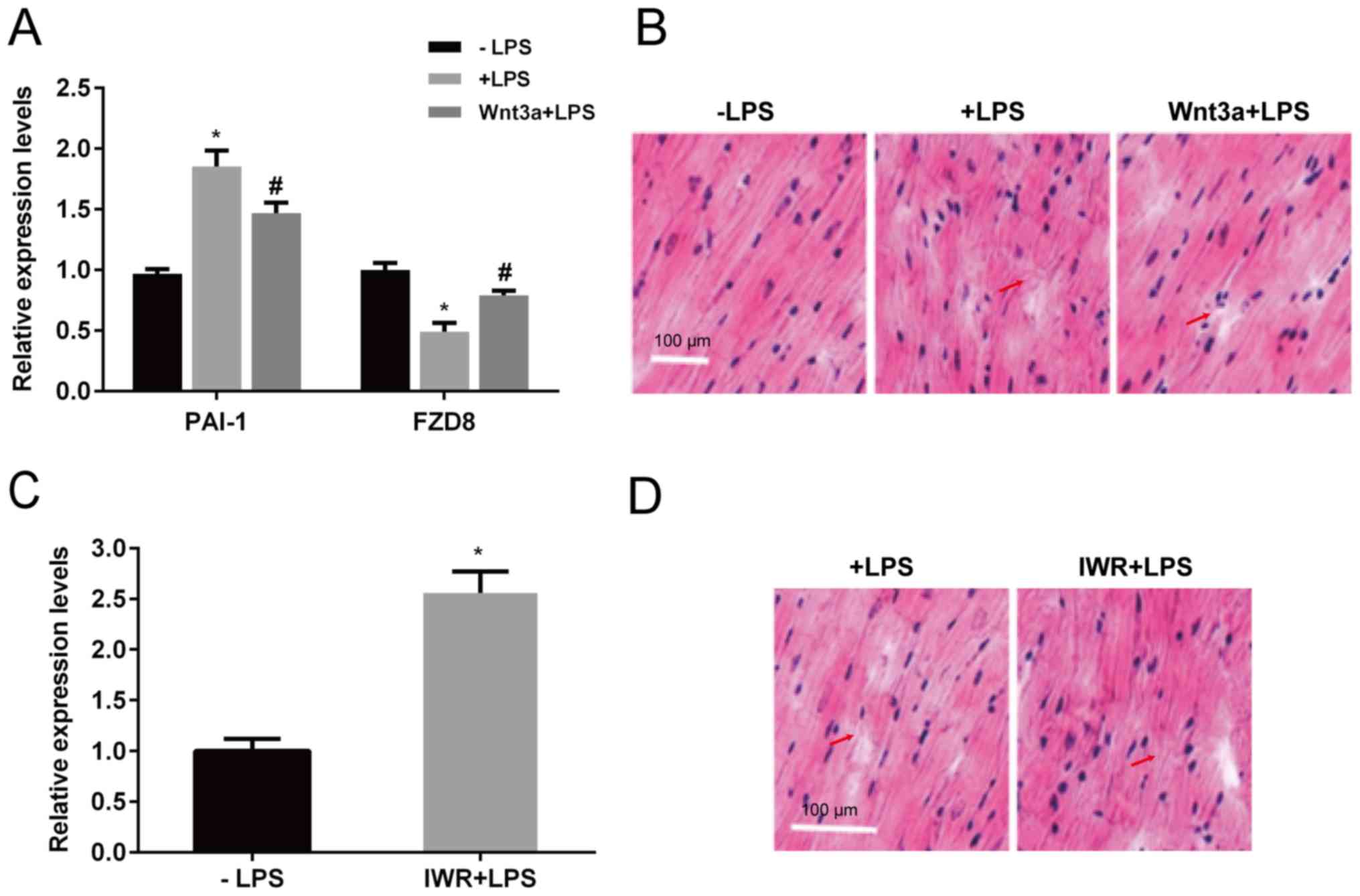|
1
|
Michalek SM, Moore RN, McGhee JR,
Rosenstreich DL and Mergenhagen SE: The primary role of
lymphoreticular cells in the mediation of host responses to
bacterial endotoxim. J Infect Dis. 141:55–63. 1980.PubMed/NCBI View Article : Google Scholar
|
|
2
|
Beeson PB: Technical Assistance of
Elizabeth Roberts: Tolerance to bacterial pyrogens: I. Factors
influencing its development. J Exp Med. 86:29–38. 1947.PubMed/NCBI View Article : Google Scholar
|
|
3
|
Singer M, Deutschman CS, Seymour CW,
Shankar-Hari M, Annane D, Bauer M, Bellomo R, Bernard GR, Chiche
JD, Coopersmith CM, et al: The third international consensus
definitions for sepsis and septic shock (sepsis-3). JAMA.
315:801–810. 2016.PubMed/NCBI View Article : Google Scholar
|
|
4
|
Seymour CW, Liu VX, Iwashyna TJ,
Brunkhorst FM, Rea TD, Scherag A, Rubenfeld G, Kahn JM,
Shankar-Hari M, Singer M, et al: Assessment of clinical criteria
for sepsis: For the third international consensus definitions for
sepsis and septic shock (sepsis-3). JAMA. 315:762–774.
2016.PubMed/NCBI View Article : Google Scholar
|
|
5
|
Engel C, Brunkhorst FM, Bone HG,
Brunkhorst R, Gerlach H, Grond S, Gruendling M, Huhle G, Jaschinski
U, John S, et al: Epidemiology of sepsis in Germany: Results from a
national prospective multicenter study. Intensive Care Med.
33:606–618. 2007.PubMed/NCBI View Article : Google Scholar
|
|
6
|
Angus DC and Wax RS: Epidemiology of
sepsis: An update. Crit Care Med. 29 (7 Suppl):S109–S116.
2001.PubMed/NCBI View Article : Google Scholar
|
|
7
|
Cohen J: The immunopathogenesis of sepsis.
Nature. 420:885–891. 2002.PubMed/NCBI View Article : Google Scholar
|
|
8
|
Drosatos K, Lymperopoulos A, Kennel PJ,
Pollak N, Schulze PC and Goldberg IJ: Pathophysiology of
sepsis-related cardiac dysfunction: Driven by inflammation, energy
mismanagement, or both? Curr Heart Fail Rep. 12:130–140.
2015.PubMed/NCBI View Article : Google Scholar
|
|
9
|
Harbarth S, Holeckova K, Froidevaux C,
Pittet D, Ricou B, Grau GE, Vadas L and Pugin J: Geneva Sepsis
Network: Diagnostic value of procalcitonin, interleukin-6, and
interleukin-8 in critically ill patients admitted with suspected
sepsis. Am J Respir Crit Care Med. 164:396–402. 2001.PubMed/NCBI View Article : Google Scholar
|
|
10
|
Simon L, Gauvin F, Amre DK, Saint-Louis P
and Lacroix J: Serum procalcitonin and C-reactive protein levels as
markers of bacterial infection: A systematic review and
meta-analysis. Clin Infect Dis. 39:206–217. 2004.PubMed/NCBI View
Article : Google Scholar
|
|
11
|
Bozza FA, Salluh JI, Japiassu AM, Soares
M, Assis EF, Gomes RN, Bozza MT, Castro-Faria-Neto HC and Bozza PT:
Cytokine profiles as markers of disease severity in sepsis: A
multiplex analysis. Crit Care. 11(R49)2007.PubMed/NCBI View
Article : Google Scholar
|
|
12
|
Vaschetto R, Nicola S, Olivieri C, Boggio
E, Piccolella F, Mesturini R, Damnotti F, Colombo D, Navalesi P,
Della Corte F, et al: Serum levels of osteopontin are increased in
SIRS and sepsis. Intensive Care Med. 34:2176–2184. 2008.PubMed/NCBI View Article : Google Scholar
|
|
13
|
Brenner T, Rosenhagen C, Steppan J,
Lichtenstern C, Weitz J, Bruckner T, Martin EO, Hoffmann U, Weigand
MA and Hofer S: Redox responses in patients with sepsis: High
correlation of thioredoxin-1 and macrophage migration inhibitory
factor plasma levels. Mediators Inflamm.
2010(985614)2010.PubMed/NCBI View Article : Google Scholar
|
|
14
|
Bae JS: Role of high mobility group box 1
in inflammatory disease: Focus on sepsis. Arch Pharm Res.
35:1511–1523. 2012.PubMed/NCBI View Article : Google Scholar
|
|
15
|
Wu Y, Wang F, Fan X, Bao R, Bo L, Li J and
Deng X: Accuracy of plasma sTREM-1 for sepsis diagnosis in systemic
inflammatory patients: A systematic review and meta-analysis. Crit
Care. 16(R229)2012.PubMed/NCBI View
Article : Google Scholar
|
|
16
|
Backes Y, van der Sluijs KF, Mackie DP,
Tacke F, Koch A, Tenhunen JJ and Schultz MJ: Usefulness of suPAR as
a biological marker in patients with systemic inflammation or
infection: A systematic review. Intensive Care Med. 38:1418–1428.
2012.PubMed/NCBI View Article : Google Scholar
|
|
17
|
Rautanen A, Mills TC, Gordon AC, Hutton P,
Steffens M, Nuamah R, Chiche JD, Parks T, Chapman SJ, Davenport EE,
et al: Genome-wide association study of survival from sepsis due to
pneumonia: An observational cohort study. Lancet Respir Med.
3:53–60. 2015.PubMed/NCBI View Article : Google Scholar
|
|
18
|
Scherag A, Schöneweck F, Kesselmeier M,
Taudien S, Platzer M, Felder M, Sponholz C, Rautanen A, Hill AVS,
Hinds CJ, et al: Genetic factors of the disease course after
sepsis: A genome-wide study for 28 day mortality. EbioMedicine.
12:239–246. 2016.PubMed/NCBI View Article : Google Scholar
|
|
19
|
Wang L, Ko ER2, Gilchrist JJ, Pittman KJ,
Rautanen A, Pirinen M, Thompson JW, Dubois LG, Langley RJ, Jaslow
SL, et al: Human genetic and metabolite variation reveals that
methylthioadenosine is a prognostic biomarker and an inflammatory
regulator in sepsis. Sci Adv. 3(e1602096)2017.PubMed/NCBI View Article : Google Scholar
|
|
20
|
Brown MA and Jones WK: NF-kappaB action in
sepsis: The innate immune system and the heart. Front Biosci.
9:1201–1217. 2004.PubMed/NCBI View
Article : Google Scholar
|
|
21
|
Li Y, Ge S, Peng Y and Chen X:
Inflammation and cardiac dysfunction during sepsis, muscular
dystrophy, and myocarditis. Burns Trauma. 1:109–121.
2013.PubMed/NCBI View Article : Google Scholar
|
|
22
|
MacDonald BT, Tamai K and He X:
Wnt/beta-catenin signaling: Components, mechanisms, and diseases.
Dev Cell. 17:9–26. 2009.PubMed/NCBI View Article : Google Scholar
|
|
23
|
Gordon MD and Nusse R: Wnt signaling:
Multiple pathways, multiple receptors, and multiple transcription
factors. J Biol Chem. 281:22429–22433. 2006.PubMed/NCBI View Article : Google Scholar
|
|
24
|
Shtutman M, Zhurinsky J, Simcha I,
Albanese C, D'Amico M, Pestell R and Ben-Ze'ev A: The cyclin D1
gene is a target of the beta-catenin/LEF-1 pathway. Proc Natl Acad
Sci USA. 96:5522–5527. 1999.PubMed/NCBI View Article : Google Scholar
|
|
25
|
Moon RT, Kohn AD, De Ferrari GV and Kaykas
A: WNT and β-catenin signalling: Diseases and therapies. Nat Rev
Genet. 5:691–701. 2004.PubMed/NCBI View
Article : Google Scholar
|
|
26
|
Clevers H: Wnt/β-catenin signaling in
development and disease. Cell. 127:469–480. 2006.PubMed/NCBI View Article : Google Scholar
|
|
27
|
Brack AS, Conboy MJ, Roy S, Lee M, Kuo CJ,
Keller C and Rando TA: Increased Wnt signaling during aging alters
muscle stem cell fate and increases fibrosis. Science. 317:807–810.
2007.PubMed/NCBI View Article : Google Scholar
|
|
28
|
Aberle H, Bauer A, Stappert J, Kispert A
and Kemler R: Beta-catenin is a target for the ubiquitin-proteasome
pathway. EMBO J. 16:3797–3804. 1997.PubMed/NCBI View Article : Google Scholar
|
|
29
|
National Research Council: Guide for the
care and use of laboratory animals. National Academies Press,
Washington, DC, 1996.
|
|
30
|
Leary S: AVMA Guidelines for the
Euthanasia of Animals: 2013 Edition. American Veterinary Medical
Association. J Am Veterinary Med Association, 2013.
|
|
31
|
Livak KJ and Schmittgen TD: Analysis of
relative gene expression data using real-time quantitative PCR and
the 2(-Delta Delta C(T)) method. Methods. 25:402–408.
2001.PubMed/NCBI View Article : Google Scholar
|
|
32
|
Rani B: RNA Sequencing (RNA-Seq): Method
and Applications. Int J Pure App Biosci. 6:167–173. 2018.
|
|
33
|
Kim D, Pertea G, Trapnell C, Pimentel H,
Kelley R and Salzberg SL: TopHat2: Accurate alignment of
transcriptomes in the presence of insertions, deletions and gene
fusions. Genome Biol. 14(R36)2013.PubMed/NCBI View Article : Google Scholar
|
|
34
|
Langmead B and Salzberg SL: Fast
gapped-read alignment with Bowtie 2. Nat Methods. 9:357–359.
2012.PubMed/NCBI View Article : Google Scholar
|
|
35
|
Gene Ontology Consortium. The gene
ontology (GO) project in 2006. Nucleic Acids Res 34: D322-D326,
2006.
|
|
36
|
Dupuy D, Bertin N, Hidalgo CA, Venkatesan
K, Tu D, Lee D, Rosenberg J, Svrzikapa N, Blanc A, Carnec A, et al:
Genome-scale analysis of in vivo spatiotemporal promoter activity
in Caenorhabditis elegans. Nat Biotechnol. 25:663–668.
2007.PubMed/NCBI View
Article : Google Scholar
|
|
37
|
Dunnick JK, Brix A, Cunny H, Vallant M and
Shockley KR: Characterization of polybrominated diphenyl ether
toxicity in Wistar Han rats and use of liver microarray data for
predicting disease susceptibilities. Toxicol Pathol. 40:93–106.
2012.PubMed/NCBI View Article : Google Scholar
|
|
38
|
Kanehisa M, Goto S, Kawashima S and Nakaya
A: The KEGG databases at Genome Net Nucleic Acids. Res. 30:42–46.
2002.PubMed/NCBI View Article : Google Scholar
|
|
39
|
Nishimura D: BioCarta. Biotech Software
Internet Rep. 2:117–120. 200.
|
|
40
|
Matthews L, Gopinath G, Gillespie M, Caudy
M, Croft D, de Bono B, Garapati P, Hemish J, Hermjakob H, Jassal B,
et al: Reactome knowledgebase of human biological pathways and
processes. Nucleic Acids Res. 37 (Database Issue):D619–D622.
2009.PubMed/NCBI View Article : Google Scholar
|
|
41
|
Draghici S, Khatri P, Tarca AL, Amin K,
Done A, Voichita C, Georgescu C and Romero R: A systems biology
approach for pathway level analysis. Genome Res. 17:1537–1545.
2007.PubMed/NCBI View Article : Google Scholar
|
|
42
|
Turner A, Tsamitros M and Bellomo R:
Myocardial cell injury in septic shock. Crit Care Med.
27:2035–2036. 1999.PubMed/NCBI View Article : Google Scholar
|
|
43
|
Hochstadt A, Meroz Y and Landesberg G:
Myocardial dysfunction in severe sepsis and septic shock: More
questions than answers? J Cardiothorac Vasc Anesth. 25:526–535.
2011.PubMed/NCBI View Article : Google Scholar
|
|
44
|
Dios S, Balseiro P, Costa MM, Romero A,
Boltaña S, Roher N, Mackenzie S, Figueras A and Novoa B: The
involvement of cholesterol in sepsis and tolerance to
lipopolysaccharide highlighted by the transcriptome analysis of
zebrafish (Danio rerio). Zebrafis. 11:421–433. 2014.PubMed/NCBI View Article : Google Scholar
|
|
45
|
Traenckner EB, Pahl HL, Henkel T, Schmidt
KN, Wilk S and Baeuerle PA: Phosphorylation of human I kappa
B-alpha on serines 32 and 36 controls I kappa B-alpha proteolysis
and NF-kappa B activation in response to diverse stimuli. EMBO J.
14:2876–2883. 1995.PubMed/NCBI
|
|
46
|
Jaffer U, Wade RG and Gourlay T: Cytokines
in the systemic inflammatory response syndrome: A review. HSR Proc
Intensive Care Cardiovasc Anesth. 2:161–175. 2010.PubMed/NCBI
|
|
47
|
Carmeliet P: VEGF as a key mediator of
angiogenesis in cancer. Oncology. 69:4–10. 2005.PubMed/NCBI View Article : Google Scholar
|
|
48
|
Derynck R, Akhurst RJ and Balmain A: TGF-β
signaling in tumor suppression and cancer progression. Nature
Genet. 29:117–129. 2001.PubMed/NCBI View Article : Google Scholar
|
|
49
|
Planavila A, Redondo-Angulo I, Ribas F,
Garrabou G, Casademont J, Giralt M and Villarroya F: Fibroblast
growth factor 21 protects the heart from oxidative stress.
Cardiovasc Res. 106:19–31. 2015.PubMed/NCBI View Article : Google Scholar
|
|
50
|
Singhal G, Fisher FM, Chee MJ, Tan TG El
Ouaamari A, Adams AC, Najarian R, Kulkarni RN, Benoist C, Flier JS
and Maratos-Flier E: Fibroblast Growth Factor 21 (FGF21) protects
against high fat diet induced inflammation and islet hyperplasia in
pancreas. PLoS One. 11(e0148252)2016.PubMed/NCBI View Article : Google Scholar
|















